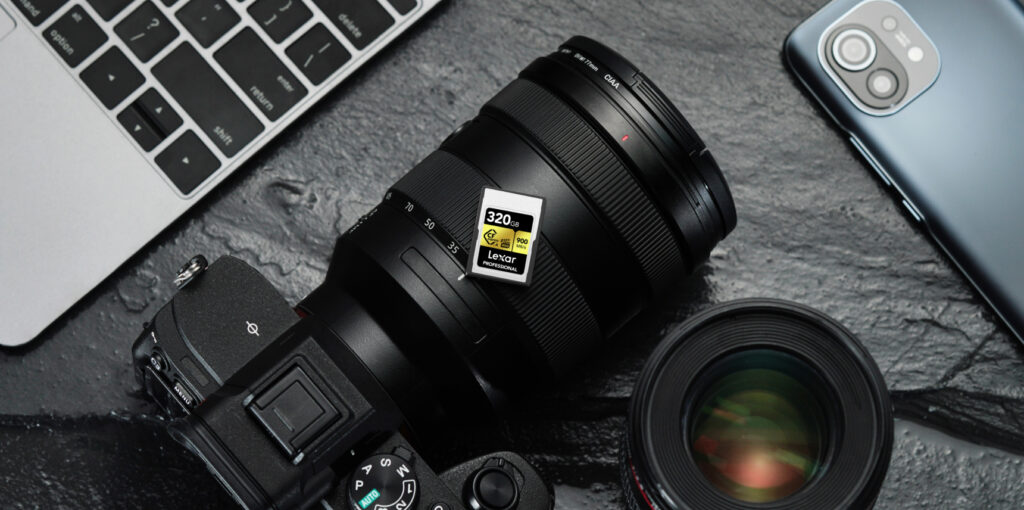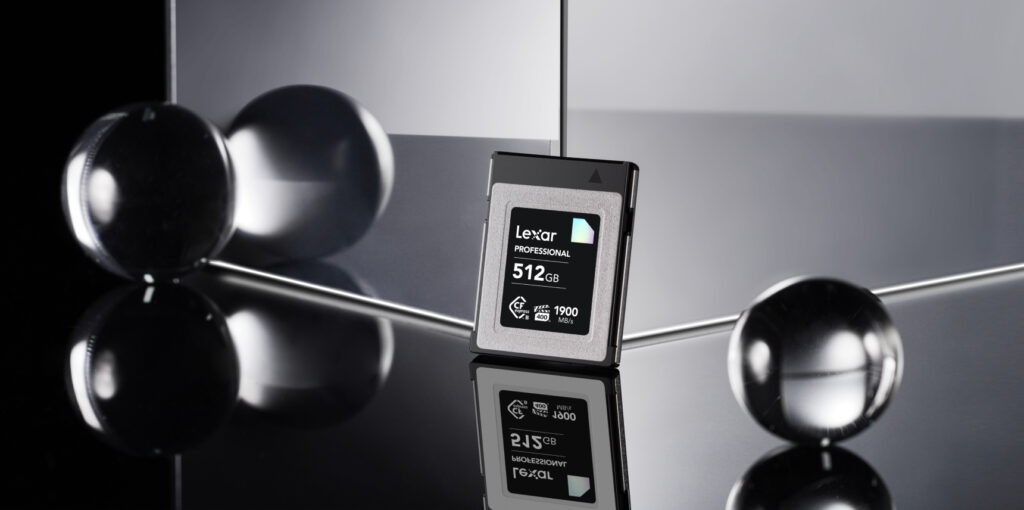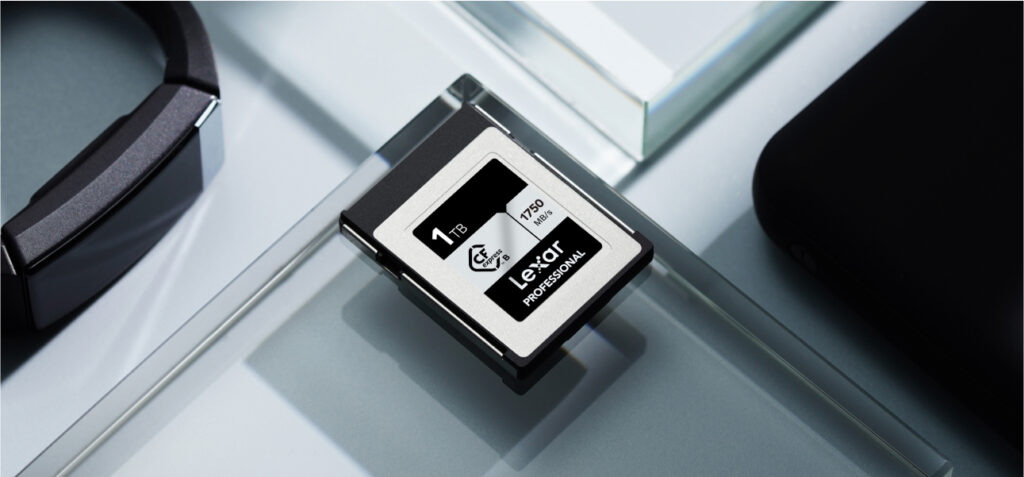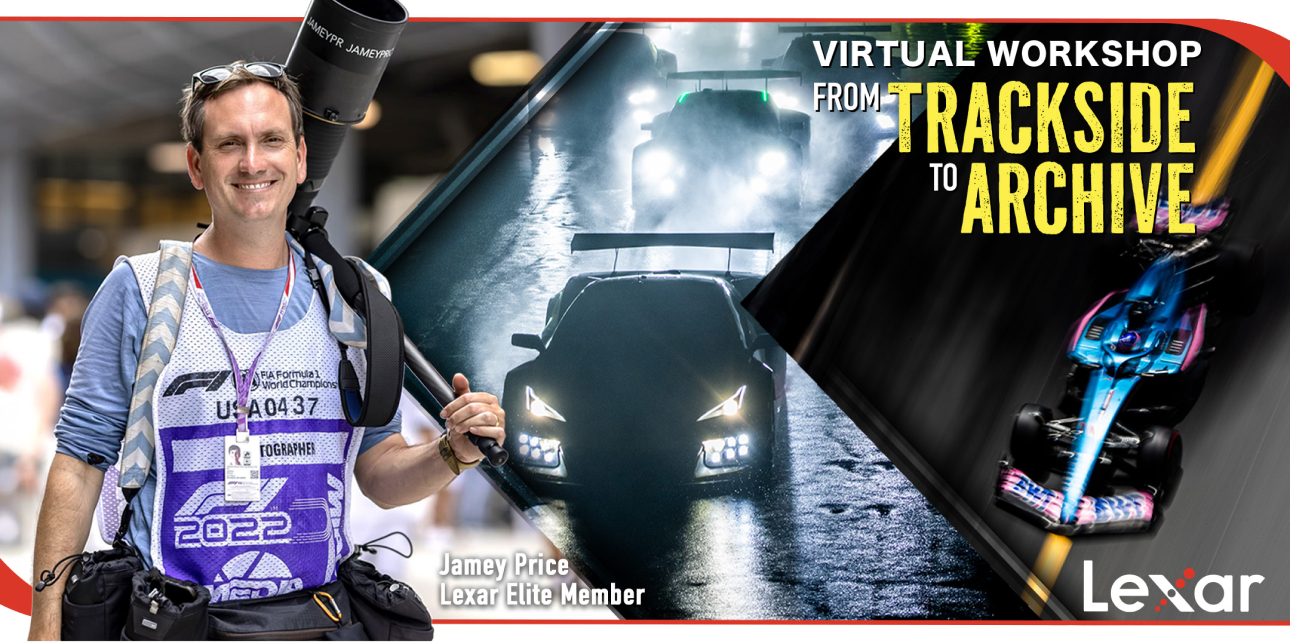
As technology rapidly advances, so do the demands we place on our devices, particularly for high-quality video and photography. Enter the CFexpress card, a game-changing memory card format designed to handle the massive data streams generated by modern cameras. But with various types, brands, and specifications, choosing the right CFexpress card can seem complicated.
This article explores the world of CFexpress cards, covering everything you need to know to make a smart purchase.
We’ll simplify the technical terms, analyze performance comparisons, and provide recommendations so you can walk away with the perfect card for your needs.
Understanding CFexpress Card Technology
A CFexpress card is a type of high-performance memory card designed to meet the rigorous demands of modern digital cameras, camcorders, and other devices that require fast and reliable storage.
It is built on the NVMe (Non-Volatile Memory Express) protocol and uses the PCIe (Peripheral Component Interconnect Express) interface, which are technologies originally developed for high-speed solid-state drives (SSDs).
What Makes CFexpress Cards So Fast?
CFexpress cards achieve incredible speeds by utilizing the NVMe protocol.
This translates to significantly faster transfer and write speeds, which are essential for high-resolution image capture and 8K RAW video recording.
There are 2 Types of CFexpress Cards
Before diving into specific CFexpress card offerings, it’s important to understand the different types available, as they cater to specific needs:
Type A CFexpress Card
Distinguished by their small form factor, Type A CFexpress cards are primarily used in Sony mirrorless cameras like the a7S III, FX3, a1, and FX6. With a theoretical maximum speed of 1000MB/s, they deliver exceptional performance for high-resolution photography and 4K video.
Keep in mind that actual real-world performance may vary and is heavily dependent on the camera and card reader used.
Type B CFexpress Card
Type B CFexpress cards boast even more impressive performance. The theoretical maximum speed climbs to an astounding 2000MB/s, allowing videographers to capture buttery smooth 8K (and even higher) video in all its RAW glory.
This card type is more common than Type A and offers high sustained write speeds. A Type B memory card ensures smooth video recording and the ability for photographers to achieve large photo bursts.

3 Considerations When Choosing a CFexpress Card
Now that you understand the technology, let’s explore the essential factors to consider when choosing a CFexpress card.
1. Compatibility
When selecting a CFexpress card, the first step is to ensure your camera or device is compatible. Some devices are specifically designed to work with certain types of CFexpress cards—Type A, B.
For example, popular cameras like the Canon EOS R5 and Nikon Z6 II are compatible with CFexpress Type B cards, delivering the high-speed performance needed for professional photography and videography.
Meanwhile, Sony mirrorless cameras such as the a7S III utilize CFexpress Type A cards, offering exceptional speed in a compact form factor.
2. Capacity
Choosing the right capacity depends on your shooting habits. A smaller capacity card, like 128GB or 256GB, is excellent for casual shooting.
Professionals dealing with massive 8K RAW video files might prefer larger sizes, like 512GB or even 1TB. This will ensure that you can fully utilize the write performance capabilities of your camera.
3. Read & Write Speeds
To harness the power of a CFexpress card and avoid bottlenecks during high-speed data transfer, pay close attention to the advertised read and write speeds. To determine your needs, consider these factors:
- Resolution: Higher-resolution cameras need faster cards. A 100MP still image demands more processing power (and storage) than a 12MP snapshot.
- Frames per Second (fps): If you capture high-speed action sequences in burst mode or at high frame rates for slow-motion, fast write speeds are crucial. The MB/s write speed can be a determining factor.
- Video Format & Bitrate: Data-heavy RAW video footage at high bitrates requires super-fast cards for seamless recording. Settling for a slower card risks dropped frames.
Best CFexpress Cards: Performance Comparison Based on Research
With various brands vying for the top spot, it’s important to understand their strengths.

Thorough analysis of popular CFexpress card brands was conducted using tools like Blackmagic Speed Test software to accurately compare read and write performance.
Lexar’s Diamond series stood out as it provides extremely high performance standards and reliability. These cards provide high speeds, making them a popular choice for photographers and videographers.
But What About Budget-Friendly Options?
You don’t have to empty your bank account for a great CFexpress card.

Lexar caters to budget-conscious users with its Silver series, which doesn’t reach the top-tier speeds of the Diamond series but still performs well with modern hardware and comes at an appealing price.
Elevate Your Creative Potential with the Right CFexpress Card
CFexpress cards are designed to meet the increasing demands of today’s high-resolution cameras and the professionals who use them. With the power of CFexpress cards, you can unlock unprecedented speeds, unparalleled reliability, and the capacity to bring your creative ideas to life without limits.
At Lexar, we understand the demands of multimedia professionals and the passion that drives you. Our CFexpress cards are engineered to meet the highest standards, ensuring your creative process is smooth, efficient, and always at its best. The DIAMOND Series is a professional-grade memory solution that offers the performance and reliability you need to focus on what you do best: creating stunning, beautiful art.
FAQs About CFexpress Cards
Are CFexpress cards better than SD cards?
Generally, CFexpress cards outperform SD cards in read and write speeds due to the superior NVMe protocol they use, similar to advanced SSDs in computers. When it comes to data retention, CFexpress cards excel, minimizing the risk of data loss.
Why are CFexpress cards So expensive?
This newer, faster technology involves higher production costs and specialized components, leading to higher prices than traditional memory card formats. They undergo extensive testing to ensure they meet the demands of professionals and enthusiasts. Many factors influence pricing, including the storage temperature ranges the cards are designed to handle.
What is the difference between CFexpress A and B?
CFexpress types A, B primarily differ in size and speed. Type A is the smallest, typically used for 4K video in Sony cameras.
Type B offers higher speeds for demanding 8K video and high-resolution photography. Type C, the newest type, targets industrial applications due to its larger size and incredibly fast speeds. Each card type utilizes a specific form factor to ensure compatibility with various camera models.
What is the fastest CFexpress Type A Card?
The fastest CFexpress Type A card is the Lexar Professional CFexpress Type A Card GOLD Series. This card is designed for high-speed performance, with read speeds up to 900MB/s and write speeds up to 800MB/s. It is optimized for professional-grade video recording and high-resolution photography, making it an excellent choice for demanding content creators who require reliable and fast storage solutions.




